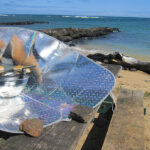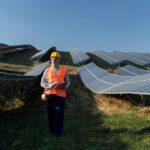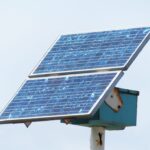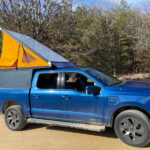With gas prices continuing to steadily rise year after year, many food truck owners are actively looking for ways to dramatically lower their fuel costs and minimize their environmental impact. One great solution that is growing in popularity is installing solar panels on food trucks. Solar panels allow trucks to generate their own electricity from the sun to run appliances, lights, and other electrical systems. Here’s a detailed overview of the many benefits of going solar, what to look for when shopping for the ideal solar panels, and some tips for properly installing and maintaining them on a food truck for optimal efficiency.
The Benefits of Solar Panels for Food Trucks
Significantly Lower Fuel Costs
Solar panels allow food truck owners to tap into the abundant renewable power of the sun to generate much of the electricity needed onboard. This decreases reliance on loud, polluting gas or diesel generators which are expensive to refuel. Every kilowatt of solar electricity generated is one less kilowatt that has to be paid for in rising fuel or electricity costs from the grid. Many trucks find solar provides for at least 30-40% of their total electrical needs.Greatly Reduce Emissions and Pollution
Food trucks often idle their engines extensively when stationary in order for the alternator to power appliances and equipment onboard. This emits high levels of air and noise pollution. Solar panels eliminate the need for engine idling, cutting down on emissions and creating a cleaner, quieter environment for customers.Gain Marketing and Promotional Opportunities
Advertising a food truck as 100% solar-powered can help attract many environmentally-conscious or “green” consumers looking to support sustainable businesses. Solar panels illustrate a commitment to eco-friendly practices that customers increasingly look for. Owners can educate customers on their solar panels and their motivation to “go green.”Provide Consistent, Reliable Power Supply
Solar panels allow food trucks to generate their own electricity consistently throughout sunny days. This gives owners a stable and reliable power supply, in contrast to the common headaches and unpredictability of generator breakdowns. Solar electricity production peaks midday when power demand is highest.What to Look for When Shopping for Solar Panels for Food Trucks
When investing in a solar panel system, it’s crucial to choose components and products specifically designed for mobile applications and rugged use. Here are the key factors to consider:High Portability for a Mobile Power Source
Look for solar panels that have lightweight aluminum frames, making them easier to lift and install. Panels should be thin, measuring 1-2 inches thick rather than 3-4 inches thick. Highly portable sizes range from 50 watts to 320 watts per panel. Monocrystalline and polycrystalline solar panels tend to be the most portable panel technologies.Maximum Durability to Withstand life on the Road
Solar panels mounted to trucks need to be able to withstand vibration, shocks, moisture and exposure to weather elements like UV rays, wind, and dirt. Look for panels with sturdy aluminum frames, weatherproof casings, and tempered glass tops. Rigorous vibration and shock testing and water submersion testing should be done.Higher Efficiency Rating to Maximize Power
Look for monocrystalline silicon panel efficiencies of at least 15%, ideally 18-22%. A more efficient panel will squeeze more power output from less roof space, but may carry a higher cost. Consider how much roof area you have to work with.Adequate Wattage for your Truck’s Electricity Demand
Opt for at least 200 watts per panel for a food truck’s power usage. For perspective, 2-3 x 200 watt panels can run a blender onboard. Your total solar wattage needs depend on your electrical systems, appliances, battery capacity, etc.Solar Panels for Food Trucks- Installing Tips
Carefully installing the solar panels in an optimal arrangement and protecting electrical components will help maximize solar production and longevity. Here are some tips:- Hire a solar installer familiar with mobile panel setups on vehicles. Getting the angles, wiring and components right the first time is crucial. Make sure your roof can bear the panel weight.
- Park the truck in a spot with full, unshaded sun exposure as much as possible – ideally facing due south if in the northern hemisphere. Tilt panels at an angle equal to your latitude to point directly at the sun.
- Use sturdy panel mounting hardware like rails, brackets and screws that can handle road vibrations. Don’t allow panels to rattle loose or chafe on the roofing. Use weatherproof grommets for wiring holes.
- Invest in a quality solar charge controller and inverter that can withstand continuous truck vibrations and surges. MPPT charge controllers are the most efficient. Get an inverter with adequate watts for your needs.
- Check panels, wiring and connectors regularly for any damage, corrosion or debris/dirt buildup which can block solar absorption and lead to leaks or shorts.
- Keep panels clear of snow buildup during winter so solar production isn’t obstructed. Carefully sweep panels clean using a soft brush.

















